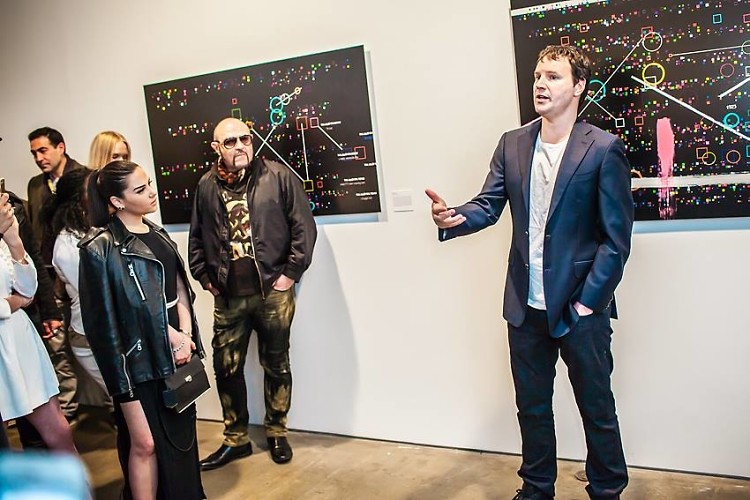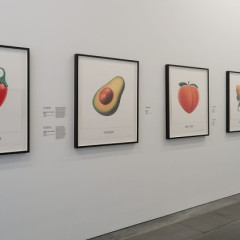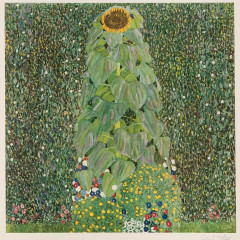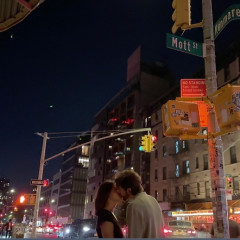
"A once-in-a-generation mind," is how a guest from opening night of Nelson Saiers’s “Inside Wall Street” exhibition describes him to us a few days later. Looking back, walking into the gallery that night was a walk into the fascinating wonderland that is Mr. Saiers's brilliant mind gifted in associative thinking. In academia and in the arts, the extraordinarily gifted and talented miraculously put together this and that. They synthesize seemingly unrelated things in original and meaningful ways—drawing from their encyclopedic knowledge and observations.
Mr. Saiers earned his Ph.D in math at the unthinkable age of 23. The UVA alum describes himself as “curious, passionate, intense.” He worked on Wall Street—as a managing director for proprietary derivatives trading at Deutsche Bank, and as a hedge fund manager. In 2014, he stepped down as CIO of Saiers Capital, trading an intense pace and a money-making algorithm to pursue his love—art.
He is like a memorable fiction character—an improbable life story plus an endearing personality complete with idiosyncrasies. The son of a U.S. diplomat, he was born in Colorado but lived in Ethiopia, Afghanistan, Swaziland, and Ghana. His morally responsible conscience has moved him to give to charity: water and World Vision for Hurricane Sandy relief. He prefers to give anonymously though, whenever possible. As a thoughtful artist he addresses complex issues of humanity in neat-looking works like “Genocide is Evil,” “Love is Blind,” and “Equality.” The titles themselves display his ability to clearly see big-picture moral positions as absolute truths—the way children are taught that 2+2=4, period.
He resides on the Upper East Side, but lives in normal T-shirts and Under Armour sweatshirts. Neither ambitious for social status nor vain, he is singlemindedly driven by the pure desire to make great art. (“As simple as this sounds, I make art because I really enjoy making art.”) Every morning, he has a turkey sandwich and green tea; for lunch, Shake Shack. (“I always get a hamburger well-done with pickles and ketchup. Every once in a while, I get a scoop of the custard.”) He goes to bed by 11.
There’s a photo of him at opening night hopping on one foot for the camera, having fun with the gallery director, like an elated kid with a buddy at show-and-tell. He is wearing a Saint Laurent coat over a Canali blazer over a Boss tee; Rag & Bone pants and Saint Laurent sneakers. (Later, he explains that he dressed well out of respect for others—his fashionable gallery director and guests in suits from Wall Street and elsewhere.) And there are photos of him speaking about his art to the crowd, with the gravity of a respected tenured professor. He is both—this and that—childlike and ultra-adult.
When we meet at The Skylark for a daytime interview in The Living Room, he is wearing a white cotton T-shirt and carrying a light-grey hoodie. Absorbed in the life of the mind, he isn’t familiar with the gorgeous modern cocktail lounge. When the video button beeps on to record his mini-lectures on his art, he’s hyper-alert and deftly explains the conceptual thinking behind his work in a heartbeat. Mr. Saiers is impressively articulate and efficient in how he explains each work. He’ll go off on a monologue, but has the awareness to cut into it to bring up the exact questions 101 viewers will have. (“Now, real quick—what is an algorithm?” “Now, why Braille?”) Each talk has a mix of this and that. His talk on “Yo Cuz” is part fact, part fiction: a history lesson on the beginning of WWI, and an imaginative translation of it to show its modern-day relevance to the world of finance.
In short, Mr. Saiers isn’t normal. He isn’t another intelligent, analytical, creative person in NYC. He’s a special person; and purchasing a piece by him is purchasing a piece of his rare mind. Will he succeed on his own? Of course not. The right publicity; the right opportunities. He’ll need this and that. But he has the potential to be an important American artist of his generation. Perhaps this is forward to say. Perhaps we should hedge our bets until he’s won a MacArthur “genius grant” or is hyped up, like a hot stock, in art world. But, like Mr. Saiers, we think for ourselves. And we’re putting our money on his future.


.jpg)
.jpg)



.jpg)
.jpg)
.jpg)




